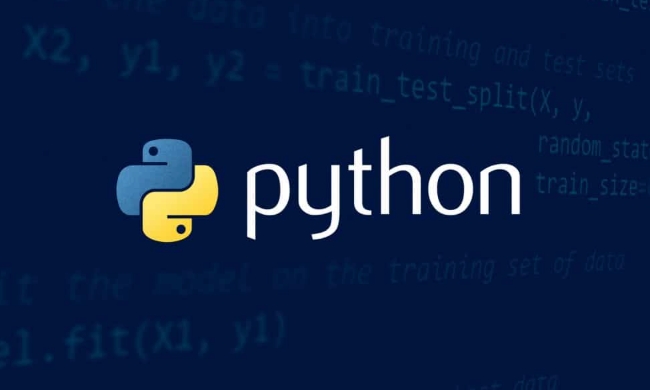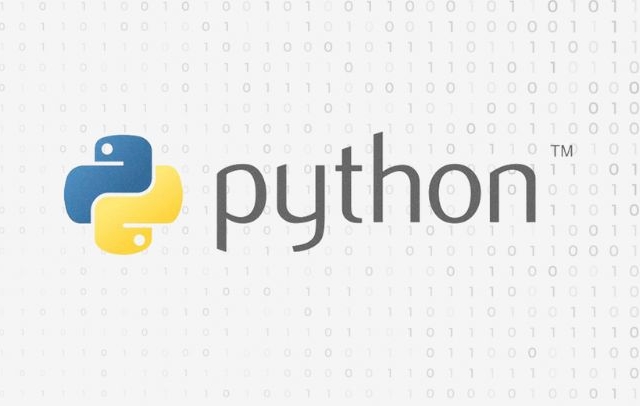List filtering is commonly used and practical in Python. The main methods include: 1. Use list comprehension to perform basic filtering, which is suitable for simple conditional judgments, such as retaining even numbers, filtering empty values, limiting string lengths, or filtering specific types; 2. Use filter() function to combine lambda expressions to be suitable for reusing complex logic, but with slightly poor readability; 3. When dealing with nested structures, you can extract the judgment logic as an independent function to improve maintainability and scalability. The selection method should be determined based on the specific scenario to ensure clear and efficient code.

Filtering lists is one of the most common operations in Python programming, and is especially useful when processing data. There are many ways to implement it, and the key is to choose the appropriate method according to the specific scenario.

Basic filtering using list comprehension
List Comprehension is the most commonly used and concise way. It is suitable for making judgments on each element and keeping terms that meet the criteria.

For example, you want to keep all even numbers in the list:
numbers = [1, 2, 3, 4, 5, 6] Even_numbers = [x for x in numbers if x % 2 == 0]
The advantage of this method is that it has clear code and high efficiency. If your filtering logic is just a simple conditional judgment, it is recommended to use list comprehension first.

Common usages include:
- Filter null values:
[x for x in data if x is not None] - String length limit:
[s for s in strings if len(s) > 3] - Filter by type:
[x for x in items if isinstance(x, int)]
Use filter() function to match lambda expressions
Python's built-in filter() function can also be used to filter lists. It accepts a function and an iterable object and returns an iterator.
For example, filter out numbers greater than 10:
numbers = [5, 12, 3, 20, 7] filtered = list(filter(lambda x: x > 10, numbers))
The advantage of this method is that it can reuse function logic, especially when your judgment conditions are relatively complex, you can define a function and pass it to filter() separately:
def is_valid(item):
return item % 3 == 0 and item > 5
valid_items = list(filter(is_valid, numbers)) However, compared with the list comprehension, filter() is slightly less readable, and novices may not be used to it. So whether to use it depends on the team's coding style or project requirements.
Handle nested structures or more complex data
When you are facing a list composed of dictionaries or multi-layer nested structures, filtering needs to go a little deeper.
For example, you have a user list and want to find all users older than 25 years old:
users = [
{"name": "Alice", "age": 30},
{"name": "Bob", "age": 20},
{"name": "Charlie", "age": 28}
]
adult_users = [u for u in users if u['age'] > 25]If it is a more complex structure, such as a nested list or a combination of fields with conditions, it is recommended to extract the judgment logic as a function first to improve maintainability:
def is_eligible(user):
return user.get('age', 0) > 25 and user.get('active', False)
eligible_users = [u for u in users if is_eligible(u)]This writing not only makes the main process clear, but also facilitates testing and expansion.
Basically that's it. Different methods are suitable for different situations, and simple filtering is enough to use list derivation; when abstract logic is needed, you can use functions to combine filters or custom judgment functions. The key is to understand the scenarios that each method applies to, and then write clear and easy-to-understand code.
The above is the detailed content of How to filter a list in python?. For more information, please follow other related articles on the PHP Chinese website!

Hot AI Tools

Undress AI Tool
Undress images for free

Undresser.AI Undress
AI-powered app for creating realistic nude photos

AI Clothes Remover
Online AI tool for removing clothes from photos.

Clothoff.io
AI clothes remover

Video Face Swap
Swap faces in any video effortlessly with our completely free AI face swap tool!

Hot Article

Hot Tools

Notepad++7.3.1
Easy-to-use and free code editor

SublimeText3 Chinese version
Chinese version, very easy to use

Zend Studio 13.0.1
Powerful PHP integrated development environment

Dreamweaver CS6
Visual web development tools

SublimeText3 Mac version
God-level code editing software (SublimeText3)

Hot Topics
 Polymorphism in python classes
Jul 05, 2025 am 02:58 AM
Polymorphism in python classes
Jul 05, 2025 am 02:58 AM
Polymorphism is a core concept in Python object-oriented programming, referring to "one interface, multiple implementations", allowing for unified processing of different types of objects. 1. Polymorphism is implemented through method rewriting. Subclasses can redefine parent class methods. For example, the spoke() method of Animal class has different implementations in Dog and Cat subclasses. 2. The practical uses of polymorphism include simplifying the code structure and enhancing scalability, such as calling the draw() method uniformly in the graphical drawing program, or handling the common behavior of different characters in game development. 3. Python implementation polymorphism needs to satisfy: the parent class defines a method, and the child class overrides the method, but does not require inheritance of the same parent class. As long as the object implements the same method, this is called the "duck type". 4. Things to note include the maintenance
 Python Function Arguments and Parameters
Jul 04, 2025 am 03:26 AM
Python Function Arguments and Parameters
Jul 04, 2025 am 03:26 AM
Parameters are placeholders when defining a function, while arguments are specific values ??passed in when calling. 1. Position parameters need to be passed in order, and incorrect order will lead to errors in the result; 2. Keyword parameters are specified by parameter names, which can change the order and improve readability; 3. Default parameter values ??are assigned when defined to avoid duplicate code, but variable objects should be avoided as default values; 4. args and *kwargs can handle uncertain number of parameters and are suitable for general interfaces or decorators, but should be used with caution to maintain readability.
 Explain Python generators and iterators.
Jul 05, 2025 am 02:55 AM
Explain Python generators and iterators.
Jul 05, 2025 am 02:55 AM
Iterators are objects that implement __iter__() and __next__() methods. The generator is a simplified version of iterators, which automatically implement these methods through the yield keyword. 1. The iterator returns an element every time he calls next() and throws a StopIteration exception when there are no more elements. 2. The generator uses function definition to generate data on demand, saving memory and supporting infinite sequences. 3. Use iterators when processing existing sets, use a generator when dynamically generating big data or lazy evaluation, such as loading line by line when reading large files. Note: Iterable objects such as lists are not iterators. They need to be recreated after the iterator reaches its end, and the generator can only traverse it once.
 Python `@classmethod` decorator explained
Jul 04, 2025 am 03:26 AM
Python `@classmethod` decorator explained
Jul 04, 2025 am 03:26 AM
A class method is a method defined in Python through the @classmethod decorator. Its first parameter is the class itself (cls), which is used to access or modify the class state. It can be called through a class or instance, which affects the entire class rather than a specific instance; for example, in the Person class, the show_count() method counts the number of objects created; when defining a class method, you need to use the @classmethod decorator and name the first parameter cls, such as the change_var(new_value) method to modify class variables; the class method is different from the instance method (self parameter) and static method (no automatic parameters), and is suitable for factory methods, alternative constructors, and management of class variables. Common uses include:
 How to handle API authentication in Python
Jul 13, 2025 am 02:22 AM
How to handle API authentication in Python
Jul 13, 2025 am 02:22 AM
The key to dealing with API authentication is to understand and use the authentication method correctly. 1. APIKey is the simplest authentication method, usually placed in the request header or URL parameters; 2. BasicAuth uses username and password for Base64 encoding transmission, which is suitable for internal systems; 3. OAuth2 needs to obtain the token first through client_id and client_secret, and then bring the BearerToken in the request header; 4. In order to deal with the token expiration, the token management class can be encapsulated and automatically refreshed the token; in short, selecting the appropriate method according to the document and safely storing the key information is the key.
 What are Python magic methods or dunder methods?
Jul 04, 2025 am 03:20 AM
What are Python magic methods or dunder methods?
Jul 04, 2025 am 03:20 AM
Python's magicmethods (or dunder methods) are special methods used to define the behavior of objects, which start and end with a double underscore. 1. They enable objects to respond to built-in operations, such as addition, comparison, string representation, etc.; 2. Common use cases include object initialization and representation (__init__, __repr__, __str__), arithmetic operations (__add__, __sub__, __mul__) and comparison operations (__eq__, ___lt__); 3. When using it, make sure that their behavior meets expectations. For example, __repr__ should return expressions of refactorable objects, and arithmetic methods should return new instances; 4. Overuse or confusing things should be avoided.
 How does Python memory management work?
Jul 04, 2025 am 03:26 AM
How does Python memory management work?
Jul 04, 2025 am 03:26 AM
Pythonmanagesmemoryautomaticallyusingreferencecountingandagarbagecollector.Referencecountingtrackshowmanyvariablesrefertoanobject,andwhenthecountreacheszero,thememoryisfreed.However,itcannothandlecircularreferences,wheretwoobjectsrefertoeachotherbuta
 Describe Python garbage collection in Python.
Jul 03, 2025 am 02:07 AM
Describe Python garbage collection in Python.
Jul 03, 2025 am 02:07 AM
Python's garbage collection mechanism automatically manages memory through reference counting and periodic garbage collection. Its core method is reference counting, which immediately releases memory when the number of references of an object is zero; but it cannot handle circular references, so a garbage collection module (gc) is introduced to detect and clean the loop. Garbage collection is usually triggered when the reference count decreases during program operation, the allocation and release difference exceeds the threshold, or when gc.collect() is called manually. Users can turn off automatic recycling through gc.disable(), manually execute gc.collect(), and adjust thresholds to achieve control through gc.set_threshold(). Not all objects participate in loop recycling. If objects that do not contain references are processed by reference counting, it is built-in






